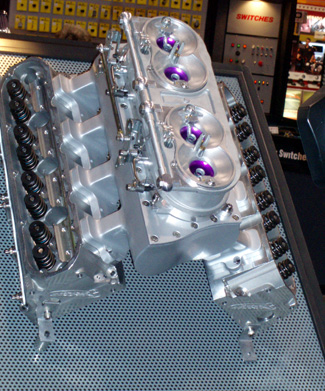JacMac, I get what you're saying - a common plenum allows the individual port reversion pulse to be absorbed somewhat by other cylinders on the intake stroke - but don't you think there's some flow and efficiency lost by the atomized fuel hitting some hard corners and flat bottoms (of the plenum) of a typical common plenum spider arrangement and then partially condensing on the wall on impact v. individual runners without hard turns and flat sides/bottoms??
Power output of Nascar stuff all of which use a 'spider' type plenum intake tends to dispell that Cliff.
But in this particular case that AJ raised we were thinking of the Inline Carb on an IDA type manifold or adapted to the lower half of a SBF Windsor intake, either of which would have a plenum between carb base & manifold runners-preferably with a divider setup to pair cyls @ 180° intervals. Fuel seperation is a bit weird to understand at times and sharp corners etc can actually help rather than hinder this. I remember a conversation with a guy who did a lot of back to back testing between dyno & flowbench on clevelands years ago who gave me this little gem of info.
The Cleveland intake valve dia dictates that the cyl wall be notched for flow & clearance. In flow testing on a dummy block setup the best numbers were obtained when the notch matched the cyl head chamber & was nicely blended into the cyl wall ( above the top ring travel). However on the Dyno this did not produce the same power as the previously unmatched setup. After several experiments and a lot of head scratching ( just as well it was a dummy block

) it dawned on him that the airflow at that particular point was slower and the fuel was dropping out of suspension , attaching itself to the cyl wall & playing no further useful purpose. To cure the problem instead of blending the notch into the cyl wall he created a ''skateboard ramp'' style notch that 'flicks' the flow at that point into the cyl.
On further testing he was then able to decrease the jet sizes to increase power, a sign that quite a lot of fuel was being wasted by the problem.
So a manifold along the lines of the CrossBoss of Jimmy Mac's can and does work well at higher RPM, but may still require some work at lower RPM. Makes me think that it might also need some means of plenum volume reduction to work on the street. Gotta admit that I might be persuaded to try a setup on my own car just for the hell of it, but that wont be soon enough for most folk.









